Rooftop Garden Tips: Easy Solutions for Urban Green Spaces
Rooftop gardens are becoming a popular way to make the most of unused space in urban areas. They provide a green escape and can be a great hobby that rewards you with fresh produce and flowers. Whether you have a large rooftop or a small balcony, you can create your own garden oasis.
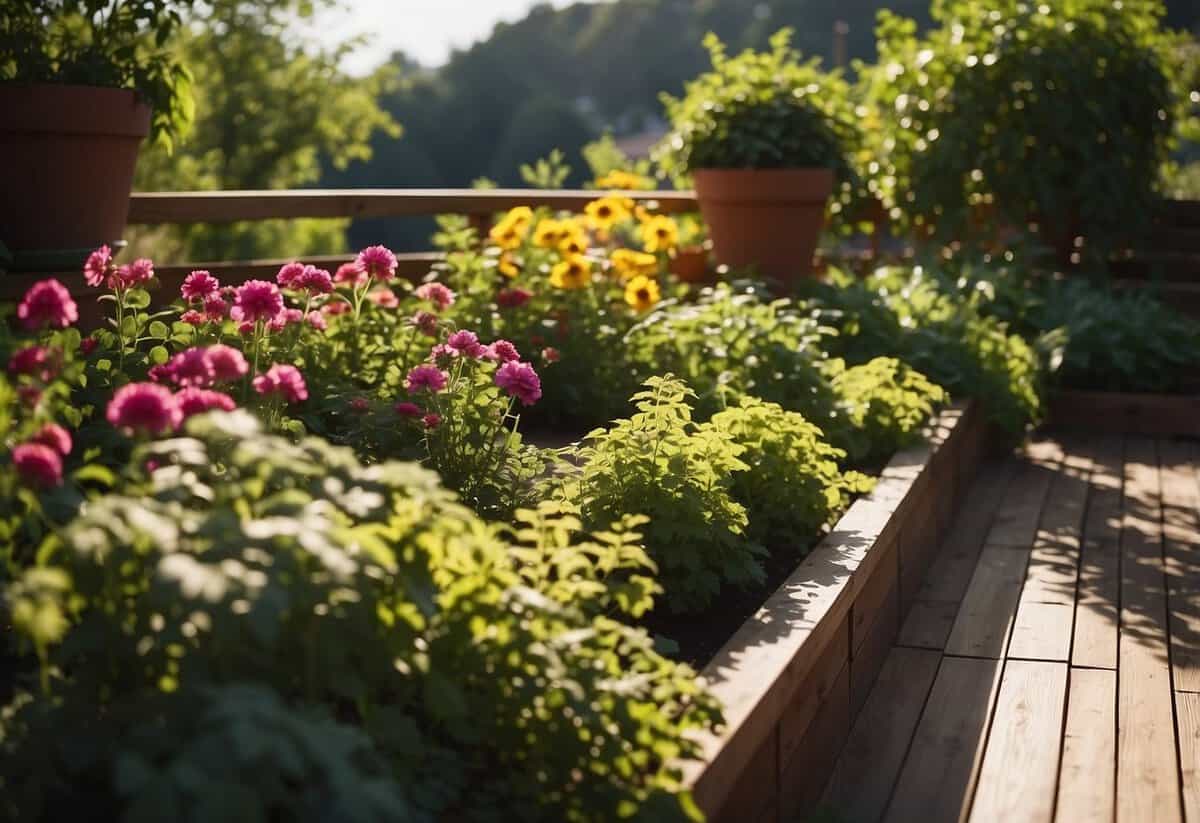
Why should you start a rooftop garden? It not only enhances the beauty of your home but also provides environmental benefits like reducing stormwater runoff and improving air quality. Plus, it can help insulate your building, saving on energy costs. With a few smart tips, you can transform your rooftop into a lush, thriving garden.
1) Choose Lightweight Containers
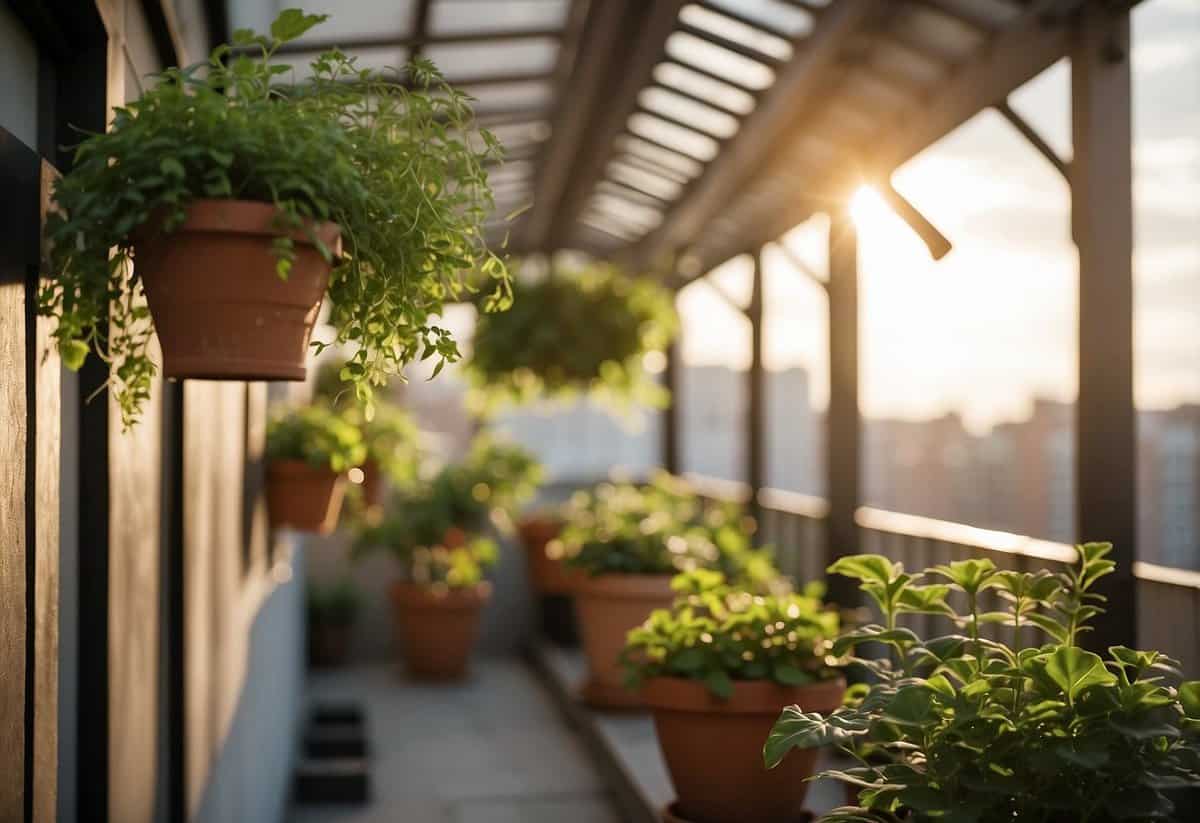
Selecting lightweight containers is crucial for a successful rooftop garden. Use materials like plastic, resin, or fabric to avoid adding too much weight.
These containers are easy to move around, helping you optimize sunlight exposure for your plants.
Lightweight options also make it simpler to handle maintenance tasks, keeping your garden thriving with minimal effort. To start, consider lightweight containers specifically designed for rooftop gardening.
2) Use Good Quality Soil

Using high-quality soil is key for a successful rooftop garden. You need a soil mix that is lightweight, drains well, and provides plenty of nutrients.
A recommended mix includes one-third perlite or vermiculite, one-third peat moss or coconut coir, and one-third compost. This blend helps retain moisture and gives your plants the nutrition they need to thrive.
For more details, check out this guide on rooftop garden soil mix.
3) Ensure Proper Drainage

Proper drainage is crucial for a healthy rooftop garden. Without it, your plants’ roots can rot due to waterlogged soil.
Make sure your containers have drainage holes at the bottom. If not, drill some yourself. Using pot feet or stands can also help by raising containers off the ground, which improves air circulation and drainage.
Elevating your pots ensures water won’t pool at the base, keeping roots healthy. Good drainage keeps your plants thriving and prevents issues like root rot.
4) Select Wind-Resistant Plants

Choosing the right plants for your rooftop garden can make all the difference. Wind-resistant plants thrive in exposed conditions.
Succulents are a great choice because they need minimal watering and can withstand strong winds.
Native grasses like feather reed grass and purple moor grass add visual interest and are highly wind-resistant.
Herbs such as rosemary and thyme are also good options, as they tolerate windy conditions well.
5) Install a Watering System
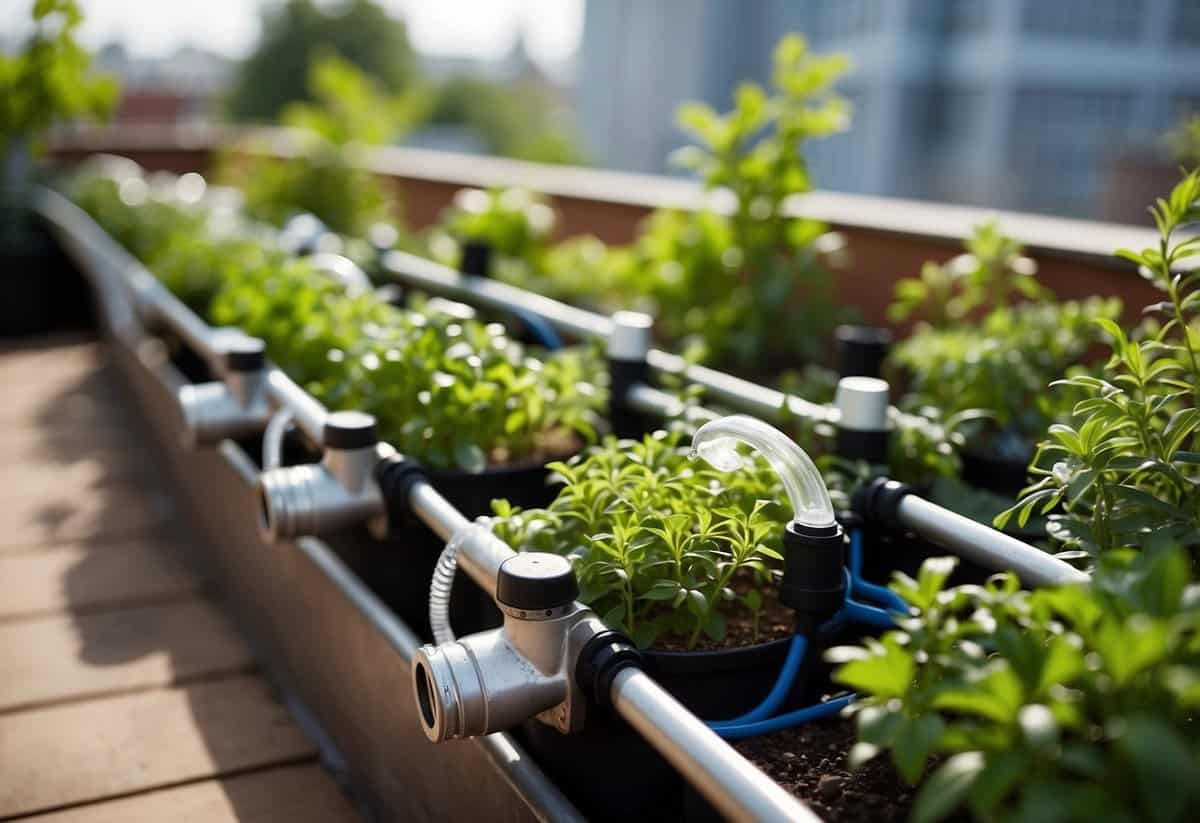
Laying out drip lines or hoses ensures even water distribution in your rooftop garden. This helps avoid overwatering or underwatering specific areas, promoting healthier plants.
Consider installing a drip irrigation system with timers and controls. This setup makes watering more efficient and reduces manual effort.
For larger gardens, drip irrigation is particularly effective. Remember to monitor and adjust the system as needed to keep your plants thriving.
6) Incorporate Vertical Space

Use trellises to grow climbing plants like tomatoes and cucumbers.
Install shelves and hangers to maximize space for pots and containers.
Consider using wall-mounted planters for herbs and flowers.
Adding vertical elements not only saves space but also makes your garden look more dynamic and vibrant.
Vertical gardens can help create a green oasis in limited rooftop areas.
7) Utilize Companion Planting
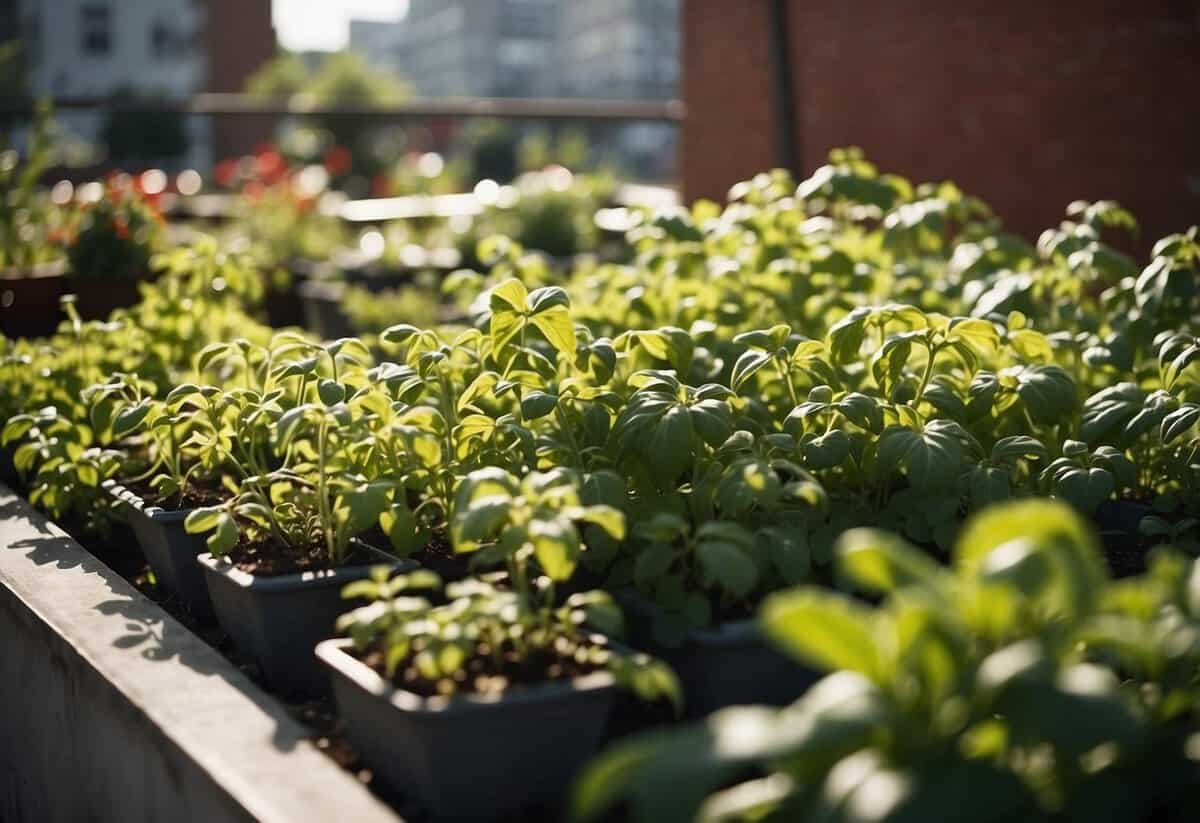
Companion planting can make your rooftop garden thrive. Pairing certain plants together can boost growth and keep pests away.
Planting garlic near potatoes, for example, can naturally repel aphids. Marigolds are another great option—they can deter soil-dwelling pests like nematodes.
Consider adding flowers such as basil next to tomatoes to improve taste and growth. These small steps can make a big difference in your garden’s success. For more tips, you can explore this companion planting guide.
8) Add Mulch to Retain Moisture
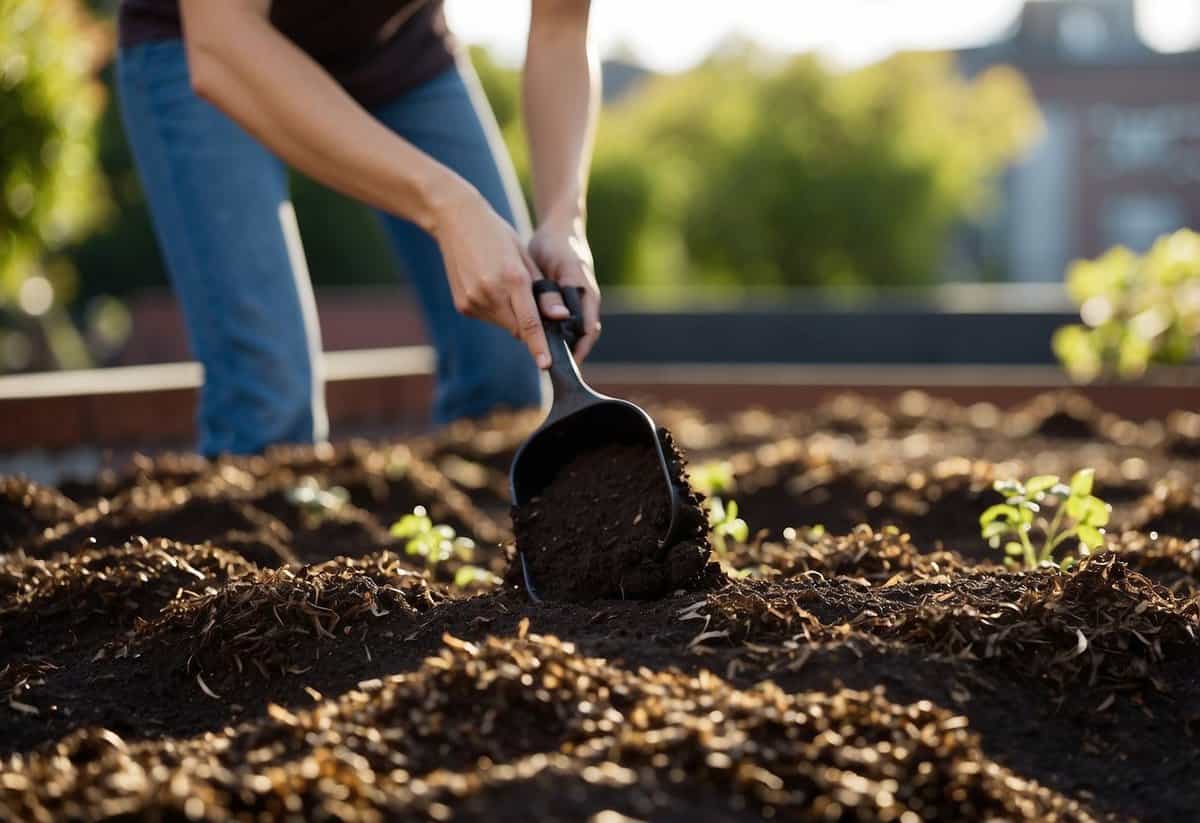
Adding mulch to your rooftop garden helps to keep the soil moist. This is important, especially when the sun is strong.
Choose organic mulches like straw or wood chips. Spread a layer about 2 to 4 inches thick. This is enough to prevent water evaporation but still lets rain reach the soil.
Avoid using too much mulch. It can trap too much water and harm your plants. Mulch also helps to reduce weed growth and can make your garden look tidy and well-maintained.
9) Fertilize Regularly
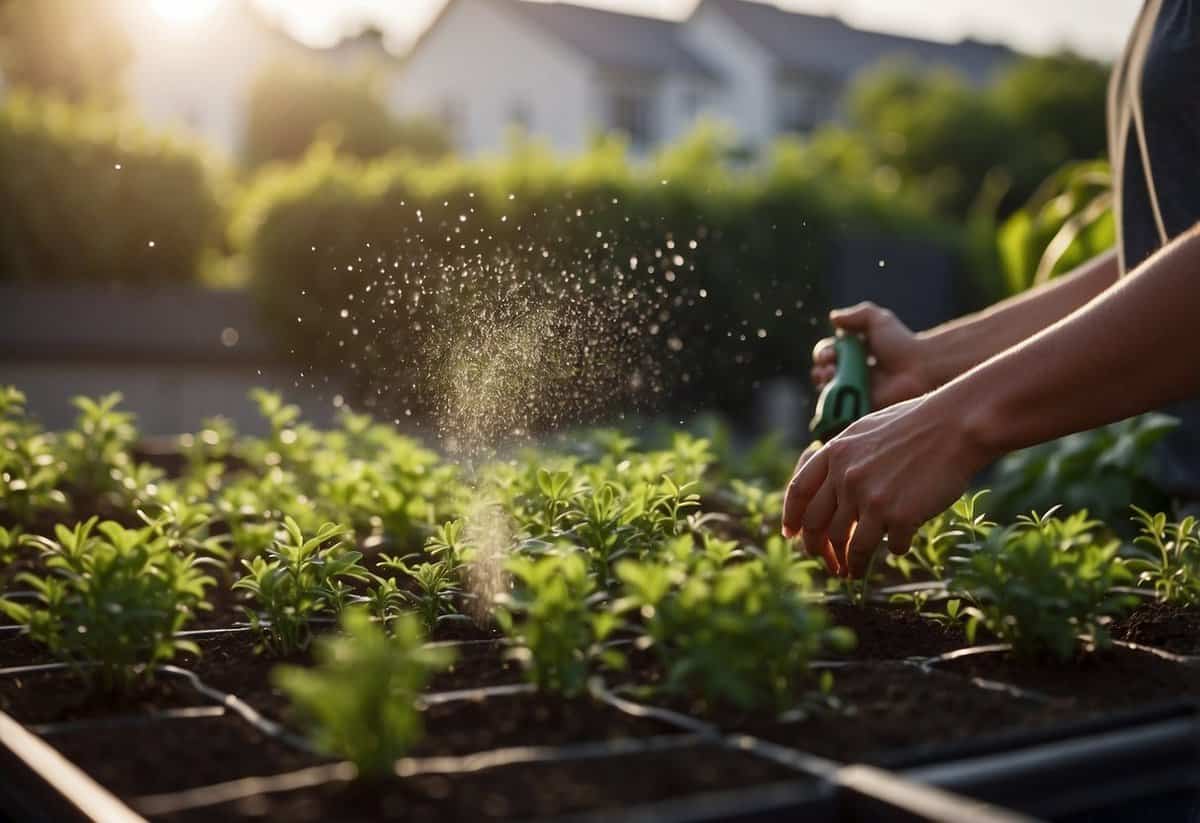
Fertilizing your rooftop garden is key to keeping your plants healthy. Organic options like compost, seaweed extract, and fish emulsion work well.
Apply these nutrients in small amounts to avoid over-fertilizing.
Don’t forget to water properly to help the nutrients reach the roots. Frequent watering helps prevent nutrient loss from the soil.
10) Rotate Your Plants

Rotating your plants is key to a healthy rooftop garden. By changing the location of your plants each season, you can prevent soil depletion and reduce the risk of diseases.
Different plants use different nutrients. When you rotate them, you help keep the soil balanced. This makes your garden more productive.
Crop rotation is also great for managing pests. Many pests prefer specific plants. Moving plants around disrupts their lifecycle, keeping your garden healthier. For more information, check out how crop rotation in rooftop gardens works. Happy gardening!
Benefits of Having a Rooftop Garden

Having a rooftop garden can positively impact both the environment and your personal health. Let’s explore how these gardens can benefit you and the world around you.
Environmental Benefits
Rooftop gardens are excellent for improving air quality. Plants reduce pollutants and increase oxygen levels, making the air cleaner.
These gardens also help cool urban areas. They act as natural insulators, reducing the need for air conditioning and lowering energy bills. This helps reduce the heat island effect in cities.
Rooftop gardens can also manage stormwater. The soil and plants absorb rainwater, which reduces runoff and decreases the risk of flooding. This process also filters pollutants from the water.
Biodiversity thrives in these gardens. They provide habitats for birds, insects, and other small animals, contributing to a healthier ecosystem. Adding a variety of plants can attract beneficial insects and promote pollination.
Personal Health Benefits
Gardening on your rooftop can improve your physical health. Tending to plants provides a good workout, helping with strength and flexibility. This can be a fun way to stay active while enjoying the outdoors.
Spending time in a rooftop garden can also boost your mental health. The time you spend surrounded by greenery can reduce stress and improve mood. It’s a peaceful space to escape from the hustle and bustle of city life.
Growing your own herbs and vegetables can lead to a healthier diet. Fresh produce is often more nutritious and tastier than store-bought options. Plus, the act of gardening can encourage you to eat more plants.
Rooftop gardens can strengthen community bonds. Sharing gardening tips or surplus produce with neighbors can foster connections and a sense of belonging. This social interaction is important for mental well-being.
Designing Your Rooftop Garden

Designing a rooftop garden involves selecting the right plants and maximizing the use of limited space. These choices help create a beautiful, functional, and sustainable garden area.
Choosing the Right Plants
When picking plants for your rooftop garden, consider factors like wind exposure, sun intensity, and the weight of the containers. Opt for drought-tolerant plants like succulents, lavender, and rosemary. These plants can withstand harsh sun and wind, common on rooftops.
Herbs and vegetables are great choices for a rooftop garden. They are not only practical but also add greenery and color. Start with hearty varieties like basil, mint, lettuce, and tomatoes.
Keep in mind that lightweight containers are essential to prevent overloading your roof. Use materials like plastic, fiberglass, or fabric pots.
Maximizing Small Spaces
Maximizing space is crucial in a rooftop garden. Use vertical gardening techniques like attaching planters to walls or using hanging baskets. This way, you can grow more plants without taking up floor space.
Try using railing planters to make use of the edges of your rooftop. These planters can hold a variety of flowering plants and herbs. Growing climbers and vines on trellises or mesh can provide greenery and privacy without taking up much room.
Consider foldable or stackable furniture to save space when not in use. This approach keeps your garden comfortable and functional.
Maintenance Tips for Rooftop Gardens

Keeping your rooftop garden in good shape requires regular attention and care. Two key areas to focus on are watering and irrigation, and pest and disease control.
Watering and Irrigation
Given the exposure to wind and sun, your rooftop garden needs consistent watering. Automatic drip irrigation systems can be very helpful as they can water plants evenly and save time.
Check soil moisture regularly, ensuring it stays damp but not waterlogged. Rooftop gardens may dry out quicker than ground-level gardens, especially during hot months.
Water in the early morning or late evening to reduce evaporation. This helps plants take in more water during cooler periods, making them healthier and stronger.
Pest and Disease Control
Rooftop gardens can face unique challenges with pests and diseases due to open exposure. Inspect plants regularly for signs of pests like aphids, mites, or caterpillars. Early detection can prevent infestations.
Use organic pest control methods like neem oil or insecticidal soap to avoid harmful chemicals. These options are safer for both plants and the environment.
Plant herbs with natural repellent properties, such as basil or marigolds. These can help deter pests and enhance your garden’s health.
By staying vigilant and using these strategies, you can keep your rooftop garden thriving and beautiful.







